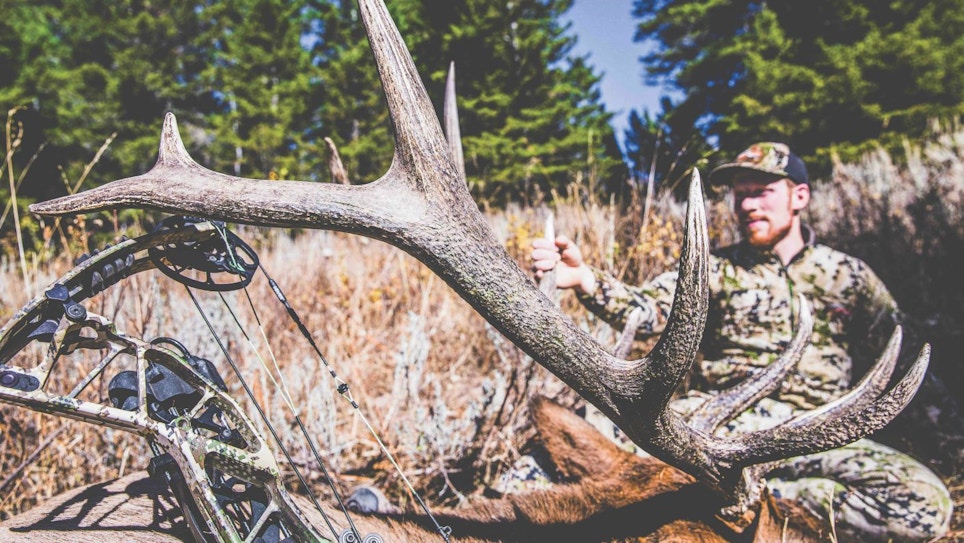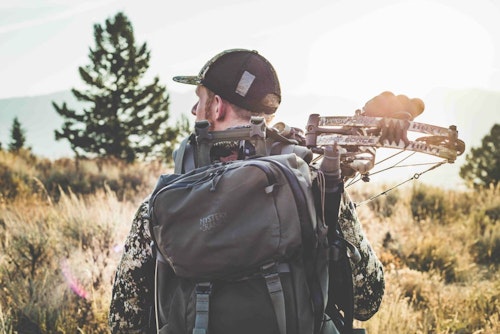It’s frustrating: Many western states require you to purchase a “qualifying” or annual hunting license to apply for bonus or preference points. For example, I’m required to purchase a nonresident annual small game hunting license (or another “qualifying” license) when I purchase my Colorado preference points. Between the small game license and my points, I spent $137.91 last spring, and I won’t be using the small game license at all.
For Utah, my points and required hunting license totaled $135, and in Nevada, everything totaled $156. I don’t plan to use my mandatory hunting licenses for anything in those states this fall, either. By now, you can see that playing the draw in multiple states for the length of time required to pull good tags is expensive, especially over a 10- to 15-year period.
Yes, tough-to-draw tags put you where world-class animals exist and offer quality hunting. The problem is you’ll get one hunt — maybe one or two weeks — to learn the area and orchestrate an archery-close encounter. That’s easier said than done, and the tag you waited many years to draw could easily go unfilled. What’s more, you’ll be waiting another 10+ years — longer given point creep — to try again.
If you want to be consistently successful with hunting Western game, you must be out west every fall. OTC (over the counter) tags give you that option.
Welcome to OTC Hunting
Unlike tough-to-draw units, you can hunt OTC units annually, if your budget allows. You probably won’t be hunting 360-inch bull elk, 180-inch mule deer bucks or 80-inch pronghorn bucks each year, but even those are possible in some OTC units. The fact is, OTC hunts are opportunity hunts, not trophy hunts. If you’re OK with chasing 200- to 300-inch elk annually rather than 360-plus-inch elk once a decade, OTC tags are your keys to the success kingdom.
Success rates in OTC units are typically lower than draw units. Lower animal densities, more significant hunting pressure and mediocre habitat (in some cases) all make for challenging hunting conditions. Those factors obviously fluctuate from year to year and unit to unit based on variables such as hunting-pressure changes. But, take success rates only at face value. They’re usually calculated based on all hunting reports submitted, and these include both folks who’ve hunted the area for years as well as first-timers.
In all likelihood, 10 to 15% of the hunters — those who’ve been hunting the unit for many years — could have accounted for 80% of the unit’s 12% success rate. In other words, their history with the unit and knowledge gained through trial and error make them the most successful hunters. Thus, their personal success rates are likely far greater than the measly 12% average success rate.
You also must remember that the hunters who contribute to success percentages have various skill and physical levels. Not every hunter in the unit is physically fit, shoots extremely well out to 60 yards and has 10 years’ worth of history in the unit; otherwise the success rate would be far higher. And, if all arrows launched resulted in harvests, that, too, would substantially raise the success rate. All that is to say that shot-opportunity percentages are likely higher than success rates, but to my knowledge, game departments don’t measure shot-opportunity percentages.

Ways to Boost Your OTC Hunting Success
As I mentioned earlier, draw licenses that come every 10 to 15 years come and go, successful or unsuccessful. They provide no opportunities to develop a robust history with the land, animal tendencies, habitat alterations or shifts in food sources, all of which are essential factors for repeatable success. In contrast, an OTC tag puts you in the same unit every year. You become a student of that unit, and then you develop an in-depth prowess and knowledge of all things related to the land and animals. Each year, you learn something you didn’t know previously. Then, your individual odds of success begin to tower over the unit’s average success rate.
Don’t always reach a decision about a unit based on your first-year reaction. The first year is usually the hardest. Often, you’re going in completely green and only know what your research has taught you. If you swing and miss the first year and then walk away looking for greener pastures, you could be walking away from a goldmine. If one or two more subsequent hunts there produce equally poor results, then move on.
The more years you spend hunting a unit, the more connections you can make, too. I’ve personally gained private-land hunting opportunities for elk, pronghorn, whitetails, mule deer and turkeys. All it takes is paying attention and networking. Make friends, be friendly at gas stations and grocery stores, and don’t be afraid to introduce yourself to people. It has worked for me. The fact is that hunting on private land can exponentially increase your success odds.
Another way to increase OTC success odds is to truly develop physical fitness. If you’re unable or unwilling to travel more than a few hundred yards off the road, expect to succeed little or not at all. If you’re willing to push hard and have a workhorse physique, you’ll be able to drive deep into areas many other hunters never reach. That, too, can spike your personal odds of encountering and harvesting game on annual OTC hunts.
Trophy Hunting and Successful Hunting
Some folks who’ve plucked 380- to 400-inch bulls from premium units in Arizona and New Mexico might not give two hoots about a 300-inch bull in Idaho. They can turn their noses up; I’ll happily take that 300-inch bull on an OTC tag. To me, “trophy” is relative to the area, the circumstances and each individual bowhunter’s perspective. More importantly, I relish in the opportunity to harvest an elk and fill my freezer with it.
To that end, you must decide what exactly you want from western hunting. If your goal is to get a crack at one substantial trophy every 10 years, then play the draw and get sought-after tags. If you want to be out west annually and have opportunities to take multiple elk within a 10-year time frame, then focus your time and money on OTC hunting, but waive your trophy expectations.







